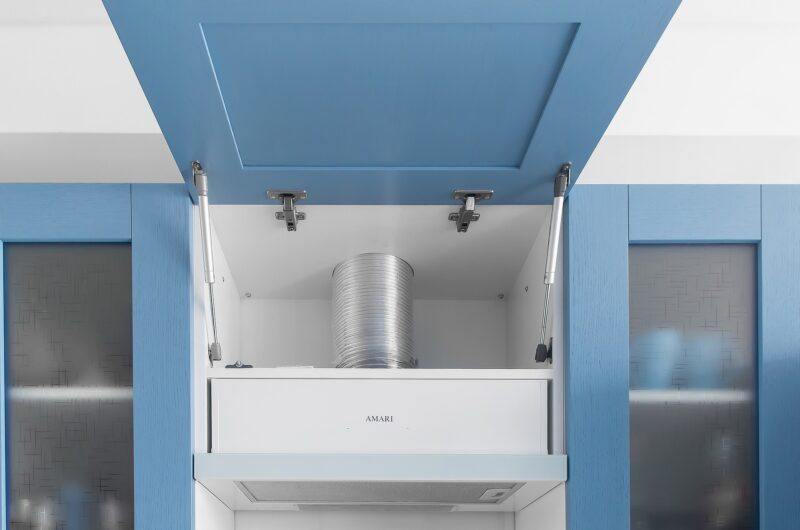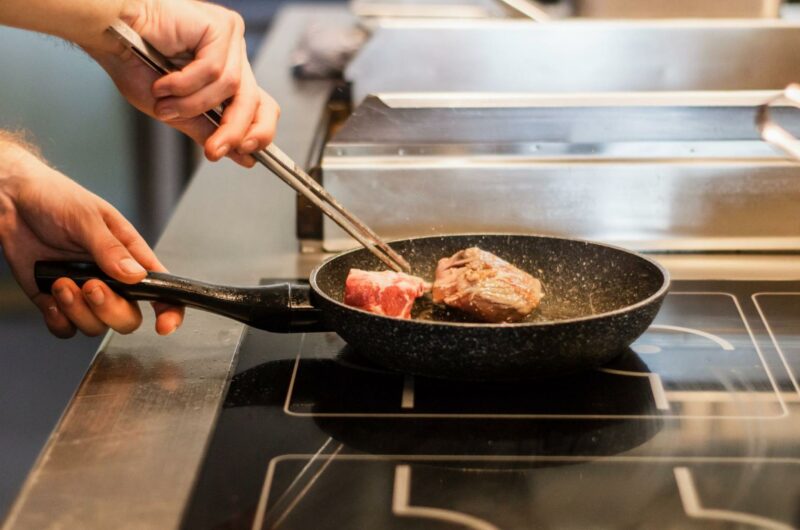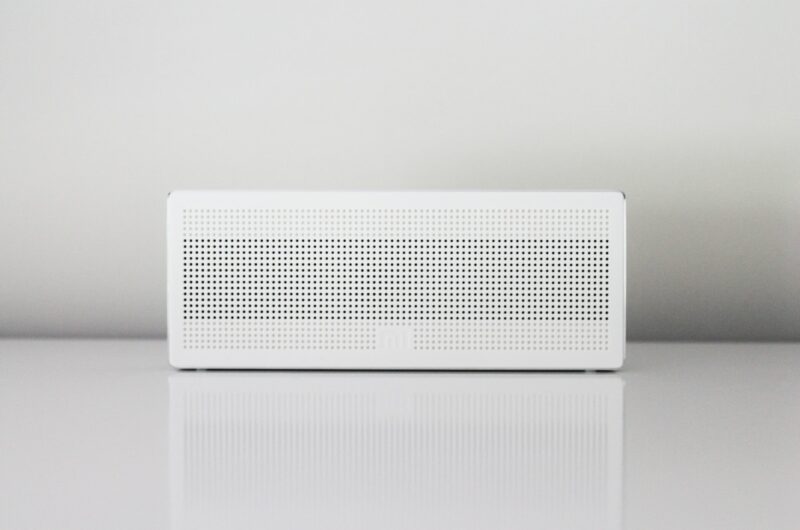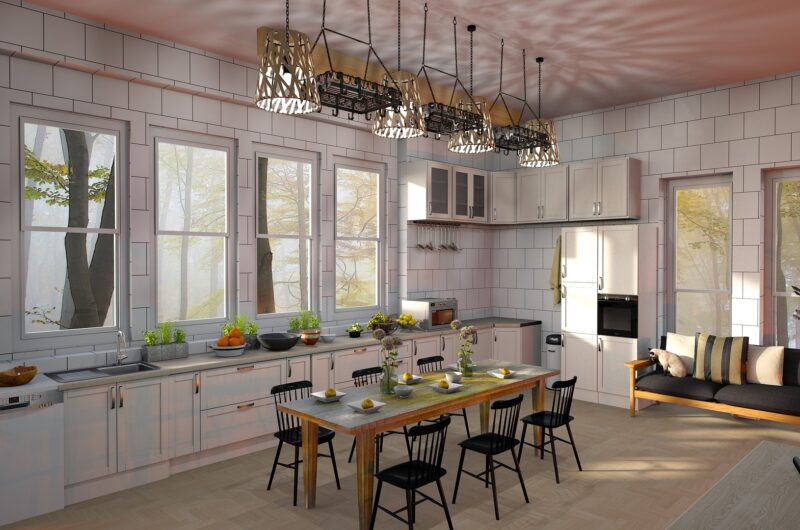Gas stoves are a staple in kitchens across the world. However, cooking with gas stoves can pose a serious health risk if proper ventilation is not used. Gas stoves release harmful fumes that can contain carbon monoxide, a colourless and odourless gas that can be deadly.
Moreover, according to a recent study funded by the Department of Energy, cooking with a gas stove even once a week emits so much pollution that it would be considered illegal outdoors. A long-term solution to this hazard is to improve ventilation in the kitchen with a custom kitchen design.
But, apart from that, here are 4 more ideas you can implement to safeguard your family while using gas stoves

1. Use Range Hoods Effectively
Range hoods are a staple in most modern kitchens. However, most people don’t utilize it to its full extent. Proper use of range hoods can make a big difference in your kitchen ventilation. Here are some tips to ensure you get the most out of your hood:
-Make sure the hood is the correct size for your stove. A small hood will not be effective, and a hood that is too large can look overwhelming in terms of aesthetics.
-Install the hood at the proper height. The bottom of the hood should be about 18 inches above the cooktop.
-Be sure to turn on the fan when cooking. Many people forget to turn it on while cooking and use it as an afterthought. Unfortunately, this contributes to poor ventilation in the kitchen, so it’s essential to use them correctly for optimal ventilation.
-Use high settings when cooking smoky or oily foods. This will help remove more smoke and grease from the air.
-Lastly, opt for copper mesh as a filter in your range hoods. Apart from being resistant to heat, steam, and corrosion, it offers anti-microbial properties,
Other than using them in range hoods, you can also install copper mesh in the kitchen’s HVAC system, as it can act as an excellent filter.

2. Control Grease With A Splatter Screen
Grease is problematic not only for the utensils and your backsplash but also for your health. It can release many airborne particles that are detrimental to your health. Furthermore, it can cause cooking odours to linger for a long time, making it unpleasant. Fortunately, there is a simple solution to deal with both these problems, a splatter screen.
If you don’t have a range hood in your kitchen, or if it’s not powerful enough to completely remove smoke and grease from the air, then you can use a splatter screen to help control grease. Place the splatter screen over your pan when you’re cooking, and it will prevent the grease particles from getting into the air. It also removes cooking odours thanks to its carbon lining.
Lastly, it is quite inexpensive and easy to clean. You can wash most of them in a dishwasher, but even some soap and hot water will do the trick. Therefore, this is a cheap and easy fix for those who don’t have a range hood in their kitchen. And for those who do have one, combining the splatter screen with a quality hood can go a long way to improving the air quality in a kitchen space, especially if it is compact.

3. Invest In An Air Purifier
When it comes to kitchen ventilation, one of the best things you can do is invest in an air purifier. Let’s face it, range hoods are only partially effective in removing contaminants from the air. In fact, some unregulated hoods are only 15 percent effective. This is why it is essential to go for air purifiers if you want to take kitchen ventilation seriously. Air purifiers work by pulling in dirty air and filtering out the pollutants, leaving you with clean, fresh air to breathe. Not only will this help improve the quality of your indoor air, but it can also help to reduce odours and airborne contaminants in your kitchen.
Always go for HEPA filters, as they offer the best filtration, removing all particles larger than 0.3 microns, and making them 99.7 percent effective. Those suffering from respiratory or cardiovascular problems would do well to one step further and opt for multiple chemical sensitivities (MCS) HEPA filters.
Lastly, when choosing an air purifier, make sure that it can handle the air volume in your kitchen space. For best results, have a rough estimate of your kitchen’s surface area, as it will help you find the ideal air purifier.

4. Open Windows
Sometimes, the best solution is also the simplest. One of the easiest ways to improve kitchen ventilation is to simply open a window. This will allow fresh air to circulate and help remove any cooking odours. However, how and when you open the windows requires some knowledge of basic ventilation. Simply opening the kitchen window after cooking might not be very effective.
The idea is to not only allow fresh air to enter the kitchen but also for the stale air containing the contaminants to exit. Hence, try to go for cross ventilation in your kitchen if possible. Keep all the interior doors open and also open a window or door that is parallel to your kitchen window. This almost always guarantees fresh air circulation and removes all the unpleasant odours from the kitchen.
Lastly, it is extremely important to not deal with bad odours by simply using a room freshener. While they might mask the odour, the contaminants are still in the air and you will end up inhaling them, along with the aerosols present in the room freshener. Therefore, you will be actually increasing the pollution level in the kitchen. Hence, use windows smartly to ventilate and you won’t feel the need to reach for the room freshener next time.
Conclusion
Kitchen ventilation is essential for reducing pollution, moisture and odour buildup. It’s important to ensure that you are getting the most out of your kitchen ventilation systems. With a few simple tips, such as opening windows, using range hoods correctly, using a splatter screen, and investing in an air purifier, you can make sure that your kitchen has adequate ventilation.
FAQs
Is kitchen ventilation necessary?
Kitchen ventilation is a key component of any good kitchen design. It helps to remove cooking odours, smoke, and grease from the air, making your kitchen a more pleasant place to be. Another noticeable improvement in a well-ventilated kitchen is the air quality. The smoke and other contaminants released during cooking can cause skin and eye irritation, as well as respiratory problems. Hence, proper ventilation is vital. That being said, there are many different types of kitchen ventilation systems available on the market today. Some are more effective than others, so it is important to do your research before choosing one for your home.
How much does it cost to install kitchen ventilation?
The average cost to install kitchen ventilation, in the form of say a range hood, can be anywhere between 200 to 500 dollars. This price typically includes only the purchase and installation of a new range hood. But adding extra parts, more ducting or electrical work will surely cost more. The type of ventilation system you choose will also affect the overall cost. For example, a basic exhaust fan may cost noticeably less than a combination of a high-end range hood and air purifier. The size of your kitchen also plays a role in the final cost. A larger kitchen will require more ventilation and therefore may be more expensive to install.
Author’s Bio:
Dhruv Mehta is a Digital Marketing Professional who works as a brand consultant and provides solutions in the digital era. In his free time, he loves to write about industrial tools, finance & home decor. Follow him on Twitter or connect with him via LinkedIn.

